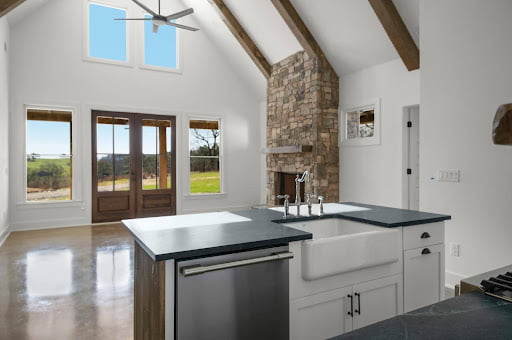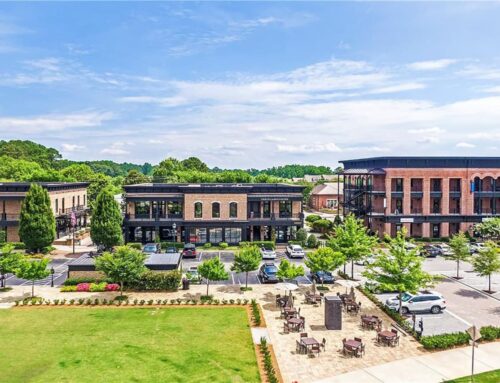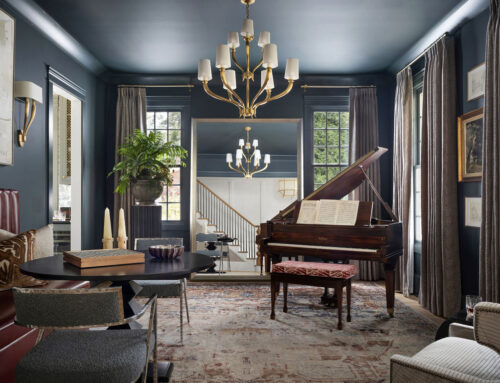Universal Design: It’s a term that’s near and dear to our hearts at ECraft. Universal design
means creating accessible homes that are functional, aesthetically pleasing, and comfortable for everyone, regardless of their age or abilities. Why wouldn’t you want all design to be that? Why would you build any other way?

In this blog post, we’re diving deep into the world of Universal Design and how it can transform custom homes into inheritable spaces, designed to stand the test of time. We’ll also touch upon some key elements to consider when designing accessible homes, and the importance of thinking ahead in the design process.

The Heart of Universal Design
Our journey into the world of Universal Design was significantly influenced by a personal
connection to a family member and then later in life with Hope Heals camp. Since 2019, our
family has not only supported this incredible initiative but has also been supported by it. Hope Heals camp embodies the spirit of inclusivity and accessibility, offering a safe space for people of all abilities to come together with their families and create lasting memories.
The concept of creating an inheritable home fits seamlessly with the mission of Ecraft. It’s about ensuring that a home can evolve with you, and you can age in it without ever feeling like you’ve outgrown it or that it’s outgrown you.
The Simplicity of Accessibility
When it comes to creating accessible homes, it’s all about simplicity. Small yet significant
modifications can make a world of difference. Three key elements that need to be considered include:
● Wider Doors: One of the most straightforward modifications is widening doors. A wider
doorway can make it easier for individuals with mobility aids like wheelchairs to move
around the house. It also provides a more open and inviting feel to your home.
● Low Thresholds: Getting rid of those annoying thresholds is not just about aesthetics;
it’s about safety and ease of movement. Low thresholds help prevent tripping and make
it seamless to transition from room to room.
● Zero Entry Showers: A zero-entry or curbless shower is a game-changer. It removes
the need to step over a high ledge to enter the shower, making it accessible for
everyone, regardless of their mobility. It also adds a touch of modernity to the bathroom.
All of these elements are simple when thought through upfront when working with your architect and designer. Good design is about anticipating the needs of the present and the future, and when it comes to creating accessible homes, this rings especially true.

Universal Design: A Home for All Ages
Let’s explore the concept of Universal Design a bit further. Universal Design is not just about making modifications for people with disabilities. It’s about creating an environment that’s user friendly for everyone, irrespective of age, size, or physical ability.
- Flexibility: A home that embraces Universal Design is flexible. It can adapt to the changing needs of its occupants. For example, a bedroom on the first floor can serve as a master bedroom for a young couple, but also accommodate aging parents or family members with disabilities. A large closet that has access to all levels stacked can easily become an elevator.
- Aesthetics: Accessibility doesn’t mean compromising on aesthetics. Universal Design home finishes can be very beautiful. Think farther than commercial grade options. Small custom modifications on standard finishes can make all the difference.
- Comfort: Universal Design homes are exceptionally comfortable. From ergonomic kitchen layouts to well-placed outlets, these homes prioritize comfort and ease, making daily living more enjoyable.

The Impact of Universal Design
The impact of Universal Design goes beyond just making homes accessible. It has far-reaching benefits that touch the lives of homeowners in many ways:
- Independence: Universal Design allows individuals to maintain their independence. It empowers them to move freely within their homes, perform daily tasks with ease, and take care of themselves.
- Safety: Safety is a paramount concern. With Universal Design, homes are designed to reduce the risk of accidents and injuries, providing a safe and secure environment for all.
- Resale Value: Universal Design homes often have higher resale values. They appeal to a broader range of potential buyers, making them a wise investment choice.

The Power of Forethought
As mentioned earlier, Universal Design is about thinking ahead. When designing an accessible custom home, it’s essential to consider the future needs of the occupants. Here’s a handy checklist to keep in mind:
- Entryways: Ensure zero-entry or low-threshold entryways to the home. Ramps can be easily added if necessary.
- Doorways: Wider doorways are a must, especially in key areas like the bathroom and bedroom.
- Bathrooms: Install grab bars for added safety and consider walk-in or roll-in showers.
- Kitchens: Lower countertops and cabinets for easy access, and ensure there’s space for mobility devices.
- Lighting: Adequate lighting throughout the home is crucial, as it helps with visibility and reduces the risk of accidents.
- Flooring: Opt for non-slip flooring options to prevent falls.
- Staircases: If your home has multiple levels, plan for a stairlift or an elevator in the future.
- Technology: Incorporate smart home technology for added convenience, such as voice-activated controls and security systems.
- Space planning: Look for home plans with future options of space for a caretakers or aging parents. A second ensuite, two larger bedroom suites, or finished basements are great ways to incorporate this space.

We’re Your Partner in Universal Design
At ECraft, Universal Design is more than just a buzzword; it’s a way of life. We believe in creating custom homes that are not just beautiful but also accessible, comfortable, and adaptable to the changing needs of our clients.
Our team of expert builders and designers work closely with homeowners to understand the unique requirements. We take into consideration not only the present but also the future, ensuring that your home remains a sanctuary of comfort for years to come. It’s a philosophy that can ensure your home is as timeless as it is beautiful.
Let’s embark on this journey together, and build a home that’s not just a place to live, but a place to thrive, no matter who you are or what life throws your way.



